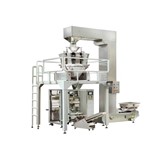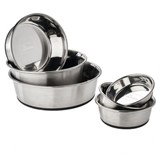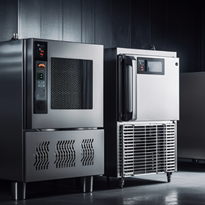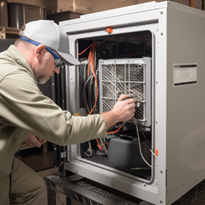Blast chillers are powerful tools that offer efficient food preservation capabilities, ensuring the quality, safety, and longevity of perishable food items. Here are some key benefits and strategies for utilizing blast chillers effectively:
1. Rapid Cooling for Food Safety
Blast chillers excel in their ability to rapidly lower the temperature of hot or cooked food to safe levels, minimizing the risk of bacterial growth and foodborne illnesses. By quickly reducing the food temperature, blast chillers inhibit the multiplication of harmful microorganisms, preserving the freshness and integrity of the food.
To utilize blast chillers for efficient food safety:
- Follow Time-Temperature Guidelines: Refer to food safety guidelines and regulations to determine the recommended time and temperature for blast chilling different types of food items. Adhering to these guidelines ensures that the chilling process is sufficient to inhibit bacterial growth effectively.
- Proper Packaging: Package food items in shallow containers or divide them into smaller portions before placing them in the blast chiller. This promotes even and rapid cooling.
- Monitoring Temperature: Regularly monitor the temperature inside the blast chiller to ensure it reaches and maintains the desired safe temperature. Use calibrated thermometers to verify the temperature of the food items as well.


Find the right Blast Chiller
Compare quotes from expert Australian suppliers and make the best choice. It's free, quick and easy!
2. Extending Shelf Life and Maintaining Food Quality
Blast chillers help extend the shelf life of perishable food items by slowing down the natural deterioration processes, such as enzymatic activity, oxidation, and microbial spoilage. By quickly cooling food, blast chillers preserve the freshness, taste, texture, and nutritional value of the food, allowing it to retain its quality for an extended period.
To maximize the shelf life and maintain food quality:
- Optimal Chilling Time: Understand the recommended chilling times for different food items. Over-chilling can affect food quality, so aim to cool the food to the ideal storage temperature without unnecessary delays.
- Proper Storage Containers: Use appropriate storage containers that are airtight and designed for food preservation. This helps protect the food from contaminants and maintains its quality.
- Temperature Control: Set the blast chiller to the ideal storage temperature for each food item. Different food items have specific temperature requirements, and maintaining these temperatures is essential for quality preservation.
3. Efficient Workflow and Time Management
Blast chillers enhance operational efficiency in commercial kitchens by streamlining food preparation processes and reducing overall preparation time. By rapidly cooling food, blast chillers allow for more efficient workflow, minimizing the time between the cooking and chilling stages.
To optimize workflow and time management:
- Preparation and Organization: Plan and organize food preparation activities to ensure a smooth transition from cooking to chilling. Prepare food items in batches, allowing the blast chiller to process one batch while the next one is being prepared.
- Batch Chilling: Utilize the capacity of the blast chiller effectively by chilling multiple batches of food simultaneously. Utilize shallow containers and proper spacing to maximize the chilling efficiency.
4. Minimizing Food Waste and Cost Savings
Efficient food preservation through blast chilling helps minimize food waste and contributes to significant cost savings for businesses. By preserving the quality and safety of food items, blast chillers reduce the risk of spoilage, allowing for better inventory management and reducing unnecessary food disposal.
To minimize food waste and achieve cost savings
- Portion Control: Proper portioning of food items before blast chilling helps avoid unnecessary waste. Divide larger quantities into smaller, more manageable portions that can be utilized as needed.
- Proper Labeling and Rotation: Clearly label containers with the contents and date of chilling to facilitate proper inventory management. Practice the "first in, first out" principle to ensure older items are used first, minimizing the chances of spoilage and waste.
- Inventory Tracking: Implement an effective inventory tracking system to monitor the usage and shelf life of blast-chilled food items. This allows for better planning and utilization of stored food, reducing the likelihood of items expiring before use.
- Cost Analysis: Conduct a cost analysis to evaluate the financial benefits of utilizing a blast chiller. Consider factors such as reduced food waste, improved inventory management, and the ability to optimize production schedules. This analysis can help demonstrate the cost savings achieved through efficient food preservation.


Find the right Blast Chiller
Compare quotes from expert Australian suppliers and make the best choice. It's free, quick and easy!
5. Versatility and Menu Flexibility
Blast chillers offer versatility in food preservation, allowing for a wider range of menu options and flexibility in culinary operations. By blast-chilling prepared food items, chefs can effectively preserve and store a variety of dishes without compromising their quality.
To leverage the versatility and menu flexibility:
- Batch Cooking and Chilling: Utilize batch cooking and chilling techniques to prepare larger quantities of food items in advance. Blast chillers enable the preservation of cooked food, providing opportunities for efficient meal planning and reducing the need for constant preparation during peak periods.
- Preparation for Future Service: Blast chilling allows for pre-preparation of food items in advance of service. This can include marinated meats, sauces, dressings, or pre-cooked ingredients that can be quickly incorporated into dishes during service, saving valuable time in the kitchen.
- Menu Diversification: With blast chillers, chefs can experiment with a broader range of menu offerings and explore new culinary creations. The ability to preserve different types of food items opens up opportunities to introduce seasonal dishes, special menu items, or customized offerings.
Incorporating blast chillers into your food preservation practices offers numerous benefits, including enhanced food safety, extended shelf life, efficient workflow, cost savings, and increased menu flexibility. By understanding the principles of efficient blast chilling and implementing proper techniques, you can optimize your food preservation processes and elevate the overall quality and efficiency of your culinary operations.
Strategies for Streamlining Workflows and Optimizing Blast Chiller Usage
Efficient workflow and optimal utilization of blast chillers are essential in busy kitchens. By implementing strategies to streamline operations and maximize the usage of blast chillers, you can enhance productivity, minimize downtime, and ensure effective food preservation. Here are some strategies to consider:
1. Organize Workstations and Equipment Placement
- Ergonomic Layout: Design the kitchen layout to minimize unnecessary movement and promote a smooth flow of work. Place the blast chiller in a strategic location that is easily accessible to all workstations involved in food preparation.
- Proximity to Cooking Stations: Position the blast chiller near the cooking stations to minimize the distance and time required for transferring hot food to the chiller. This enables quick and efficient transfer, reducing the risk of food spoilage and maintaining food safety.
2. Batch Cooking and Chilling
- Batch Preparation: Plan and organize the preparation of menu items in batches. This approach allows for efficient utilization of the blast chiller by preparing larger quantities of food at once. It also helps maintain a consistent workflow and minimizes downtime between batches.
- Shallow Containers and Portioning: Utilize shallow containers when placing food in the blast chiller. This promotes faster and more even cooling. Additionally, pre-portion food items before chilling to expedite the plating or packaging process during service.
3. Time Management and Coordination
- Synchronized Operations: Coordinate the timing of food preparation and blast chilling to optimize workflow. Ensure that different kitchen stations work in harmony to avoid delays or bottlenecks in the process.
- Preparation Time Allocation: Allocate specific time slots for blast chilling during off-peak hours. This allows for efficient utilization of the blast chiller while minimizing interruptions during busy service periods.
4. Proper Inventory Management
- Inventory Planning: Maintain a well-planned inventory management system. Utilize blast chilling to prepare and preserve ingredients, pre-cooked dishes, and other food items in advance, ensuring they are readily available for high-demand periods.
- First In, First Out (FIFO): Adhere to the FIFO principle when storing blast-chilled food items. Place newly chilled items at the back of the storage area, ensuring that older items are used first to minimize waste and maintain freshness.
5. Employee Training and Communication
- Training Programs: Conduct regular training sessions to familiarize kitchen staff with blast chiller operations, including proper handling and utilization. Ensure that employees understand the benefits of blast chilling and how it contributes to efficient workflow and food safety.
- Effective Communication: Establish clear communication channels among kitchen staff to facilitate smooth operations. Clearly communicate the importance of blast chiller usage, the desired temperature ranges, and the procedures for transferring food items to and from the chiller.
6. Regular Maintenance and Monitoring
- Scheduled Inspections and Servicing: Follow the manufacturer's recommended maintenance schedule for the blast chiller. Regularly inspect and service the chiller to ensure its optimal performance. This helps prevent breakdowns and maintains consistent cooling efficiency.
- Temperature Monitoring: Implement a system to monitor the blast chiller's temperature consistently. Regularly check and record the temperature readings to ensure that food items are being chilled within the recommended safe temperature range.
In conclusion, blast chillers offer significant advantages in food preservation, including rapid cooling for food safety, extended shelf life, efficient workflow, cost savings, and menu flexibility. By following strategies such as adhering to time-temperature guidelines, optimizing inventory management, and implementing efficient workflow practices, businesses can maximize the benefits of blast chillers. Additionally, organizing workstations, coordinating operations, training employees, and conducting regular maintenance and monitoring are key to streamlining workflows and ensuring optimal usage of blast chillers. By incorporating these strategies, businesses can enhance productivity, minimize waste, and maintain the quality and safety of their food products.













-160x160-state_article-rel-cat.jpg)


